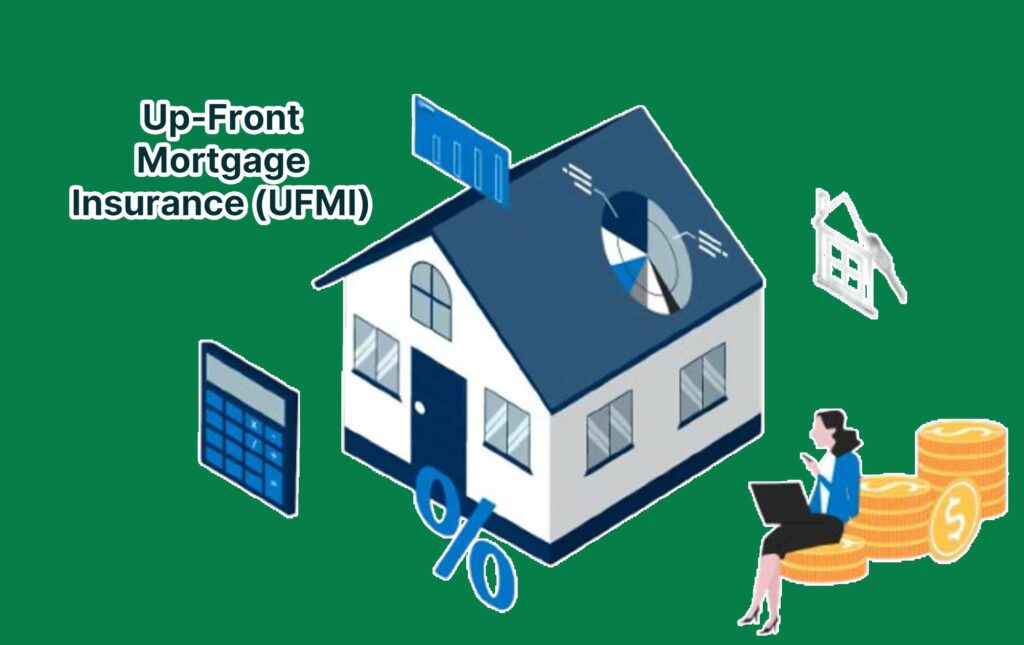It is essential to understand the associated costs of getting a mortgage, especially during the home-buying procedure. However, this process can be daunting, and one of the costs is up-front mortgage insurance.

This form of insurance is also known as UFMI, and it affects the entire cost of homeownership significantly. In this comprehensive guide, we will be learning more about up-front mortgage insurance, how it works, its costs, and effective strategies to prevent or avoid UFMI.
What is Up-Front Mortgage Insurance?
Up-front mortgage insurance is also known as UFMI, and it is a form of insurance premium usually paid at the beginning of a mortgage loan. Furthermore, it is meant to safeguard the mortgage lender in case the borrower fails to pay back the loan.
Apart from this, up-front mortgage insurance is usually associated with government-backed loans in some cases, the U.S. Department of Veterans Affairs (VA), and loans insured by the Federal Housing Administration (FHA). In addition to this, up-front mortgage insurance is different from monthly mortgage insurance premiums, which are typically paid over the life of the loan regularly.
Understanding UFMI
How does UFMI work? Up-front mortgage insurance operates as an initial lump-sum payment usually made at the end of a mortgage. Moreover, this premium payment is usually calculated as a percentage of the whole loan amount.
The main objective of up-front mortgage insurance is to act as a safety net for lenders by mitigating the risks of lending to a borrower who has a less-than-perfect credit history or might not have a large down payment.
Hence, by paying up-front mortgage insurance upfront, borrowers can smoothen their financing access by backing up their loans.
How Much Is the Up-Front Mortgage Insurance Premium?
The rate of up-front mortgage insurance is 1.75% of the initial loan amount. So, for a mortgage that costs $200,000, the UMFI fee is $3,500. In the meantime, all FHA borrowers will pay the same amount of UFMI premium rate regardless of how small or big their mortgage is.
Nonetheless, if you qualify for an FHA streamline refinance, the up-front mortgage insurance premium will drop to 0.55%. Therefore, on the $200,000 mortgage, the FHA streamline refinance up-front mortgage insurance premium will be $1,100. Despite that, the cost of this premium amount is also affected and differs based on the lender and the loan type.
Why Do Lenders Charge UFMI?
Mortgage lenders usually charge up-front mortgage insurance to reduce their risk exposure. In other words, this type of mortgage insurance offers protection to lenders from possible losses associated with a borrower defaulting or failing to pay back the loan.
In addition, it is for borrowers who have less-than-ideal credit or are not able to make a decent down payment. Hence, UFMI acts as a financial safety net for mortgage lenders. So, when they charge up-front mortgage insurance, lenders can provide a wide range of options to borrowers.
Is UFMI Refundable?
In many scenarios, up-front mortgage insurance is not refundable. However, there are exclusions based on the policy of the lender and the type of loan. For example, FHA loans provide a partial refund of the up-front mortgage insurance premium if the mortgage borrower refinances the loan within a specific period, usually within 3 years.
Meanwhile, this refund amount is divided based on the period the borrower has had the loan. Nevertheless, it is important to go through your loan documents carefully and ask the lender if you have any questions concerning the refund policies.
Tips to Avoid Paying for Up-Front Mortgage Insurance (UFMI)
Avoiding up-front mortgage insurance is an excellent approach to consider if you do not wish to have an additional financial burden apart from your mortgage:
Consider Lender-Paid Mortgage Insurance
Lender-paid mortgage insurance is also known as LPMI and is among the effective ways to avoid paying UFMI. With this type of mortgage insurance, lenders can be responsible for the insurance cost but might increase the interest rate. Lender-paid mortgage insurance is no doubt an ideal alternative based on your financial situation.
Go for Conventional Loans
Opting for a conventional loan does not need this insurance, especially if you have a down payment of 20% or more. You might just be able to avoid UFMI if you can handle a larger down payment.
Seek Special Programs
Yes, there are specific local homebuyer assistance programs and government programs that can mitigate or get rid of up-front mortgage insurance. So, search for the available programs in your area and see if you are qualified.
Negotiate
Feel free to always negotiate with your lender in terms of UFMI. Besides, some lenders might provide alternatives or willingly negotiate with you. If you have a good down payment and a strong credit score, you have a high chance of negotiating.
Refinance
If you want to avoid this insurance or you already have a mortgage with this type of insurance, considering refinancing is advised. However, it is important to consider the benefits and costs to make sure the refinancing will meet your financial goals.
Conclusion
Up-Front Mortgage Insurance (UFMI) is an essential part of the mortgage process, especially for government-backed loans. If you understand how it works, how much it costs, and effective strategies to avoid or prevent it, it can help you make the right decision and handle your mortgage expenses. If you need help, you can ask a financial professional and explore the available options to get favorable mortgage terms.



